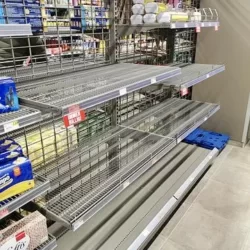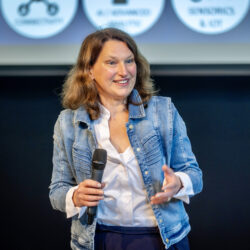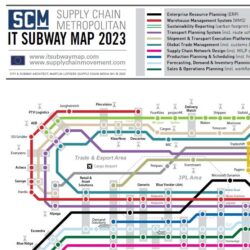New software reduces the chance of empty supermarket shelves

New software offers a solution for supply bottlenecks in international goods traffic. Experts from Fraunhofer-Gesellschaft – the largest applied research organization in Europe – have succeeded in developing IT solutions that significantly reduce the likelihood of empty supermarket shelves.
Global supply chains are complex networks and therefore very vulnerable. This can lead to situations such as recently seen in the UK, where logistics problems caused empty shelves in supermarkets, and petrol stations ran out of fuel. A research team at the Fraunhofer Institute for Industrial Mathematics ITWM is therefore developing mathematical methods that can be used to calculate how to minimize supply chain risks.
The researchers analyse the properties of supply chains using mathematical models. The failure scenarios simulated on the basis of these calculations show the points at which there is a greater need for action. Next, the researchers focus on holistic optimization, aimed at creating a more robust supply chain that can cushion risks without incurring major costs. They package all variables into a multi-criteria optimization problem. In this way, they determine the best possible solution for the triad of resilience, cost and risk.
Algorithms calculate the optimal balance and thus various options for raw materials, suppliers and warehousing. Even the use of alternative materials is considered. The top priority is to make as few assumptions as possible. “Our work has set the ball rolling – companies that previously relied on Excel spreadsheets and their gut feeling are now engaging in very fruitful discussions,” says Dr Heiner Ackermann, Deputy Head of Optimization – Operations Research at Fraunhofer.
Early detection of potential bottlenecks
The Fraunhofer Institute for Material Flow and Logistics IML also offers effective support for testing and optimizing supply chains with its Order-To-Delivery-NETwork Simulator (OTD-NET). Thanks to this tool, planning and material flow processes from order to delivery can be continuously assessed. “OTD-NET maps out even highly complex supply chains in full and at all levels, including the planning and information flow processes,” says Marco Motta from Fraunhofer IML.
“In the simulation, I can easily play around with demand peaks, a slump in the respective market or scenarios in which production is disrupted,” Motta explains. Dispatchers can use a digital twin combined with simulations to see which cargo ships have loaded which parts, where exactly they are located, and when the consignment will be available. Thus, the supply for the next 20 to 30 weeks can be depicted for global networks, enabling potential bottlenecks to be detected early on.
Both the automotive sector and the medical industry have suffered from supply bottlenecks recently. Saskia Sardesai from Fraunhofer IML is leading several research projects in which OTD-NET is being used to increase resilience in value creation networks for medical supplies. “Especially smaller and medium-sized companies were addressing this problem using existing spreadsheet analysis tools. However, this approach does not identify dynamics.”
Increasing resilience
This is where OTD-NET comes into play. The simulation dynamically shows over a long period whether all parts will be in the right place at the right time. “If all the parts are available except those from my transatlantic supplier and there is no alternative supplier in Europe, I will quickly have a break in my chain lasting over a month,” outlines Sardesai.
And how can the European manufacturing industry’s resilience to future pandemics be increased? That too is being investigated in a research project supervised by Sardesai. A simulation model has been developed that takes into account future peaks and fluctuations in demand, as well as supplier risks. Sardesai describes them as simple models that facilitate rapid feedback and implementation for a variety of companies. Particular attention was paid to capacities, lead times, transportation frequency and possible supply restrictions. Users can see how individual factors interplay. Sardesai: “That’s an invaluable advantage compared to the long-standing Excel solution.”










